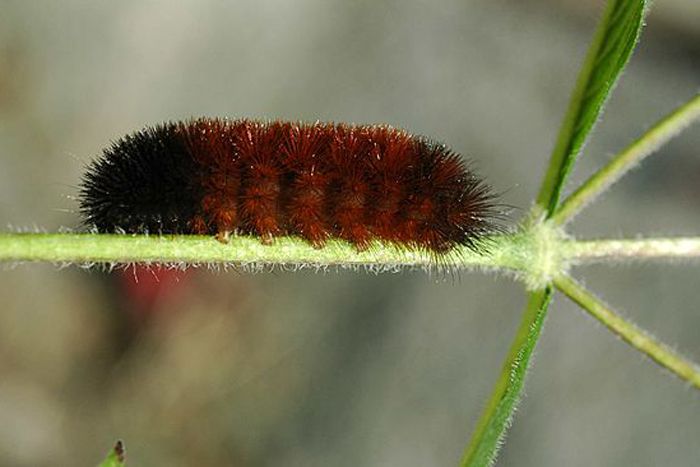Do Animals, Insects Possess Winter Prognosticating Prowess?

This article was provided by AccuWeather.com.
There is a lot of folklore and wives' tales associated with animal and insect winter prognostication. Maybe the most famous on a yearly basis is Punxsutawney Phil, the world-renowned groundhog prognosticator from north-central Pennsylvania.
AccuWeather.com meteorologists have weighed in with their forecast for the winter of 2013 and 2014, but what about the forecasters from the animal world?
3. March of the Insects
Some of the folklore surrounding a bad winter include ants and hornets building their nests higher than normal, an early migration of the Monarch butterfly, an increase of spiders weaving larger webs and going into homes in greater numbers and honeybees going into their hives sooner than usual.
Not so, said John R. Wallace, a biology professor at Millersville University of Pennsylvania and a member of the Pennsylvania Entomological Society.
"I think the upshot here is that there is plenty of lore and a paucity of data to assign any fragment of truth on these prognosticating 'wanna-bees,' pun intended," Wallace said.
Sign up for the Live Science daily newsletter now
Get the world’s most fascinating discoveries delivered straight to your inbox.
2. Things Getting Squirrelly Around Here
Squirrels have been associated with winter weather lore for their nut-gathering abilities ahead of wintry weather. The bushiness of squirrels' tails has also been believed to be a harbinger of a bad winter.
"I have not heard a story where squirrel tail bushiness or nest location is used to predict winter weather," Penn State Altoona Biology Professor Carolyn Mahan said.
Squirrels' behavior in the fall is related to the fall mast crop such as acorns and hickory nuts, Mahan said.
"If there is a lot of mast, you will see squirrels gathering and scatter hoarding. If the mast crop is low, as it is in central Pennsylvania this year, squirrels may have to wander or forage farther to find food," she said.
1. Rings of Truth: Woolly Bear Caterpillar
Of all the animal and insect folklore, there is one species that stands out for having grains of truth. That is the woolly bear caterpillar.
C.H. Curran, an entomologist from the American Museum in New York, collected data from 1948 through 1956 and compared those observations to the actual winter weather experienced, Michael J. Raupp, "the bug guy" and an entomology professor at the University of Maryland, said.
Other researchers have done similar projects, and predictions with up to 80 percent accuracy are reported, Raupp said.
The prognosticating prowess comes from the width of the caterpillar's band.
"A broad orange band equals a mild winter. A narrow band equals a harsh winter," Raupp said.
People, however, can be mistaken into thinking there will be a harsh winter because they looked at the wrong caterpillar.
"There is a pure black woolly bear relative that is often confused with the banded woolly bear," Raupp said.
RELATED: Map: Current Winter Weather Advisories and Warnings US Winter Forecast Canada Winter Forecast
© AccuWeather.com. All rights reserved. More from AccuWeather.com.
With much of the country experiencing an unseasonably warm winter, fears of climate change come to mind. See how well you understand recent weather, climate and the difference between them.
Pop Quiz: Sign of Climate Change, or Just Weird Weather?














